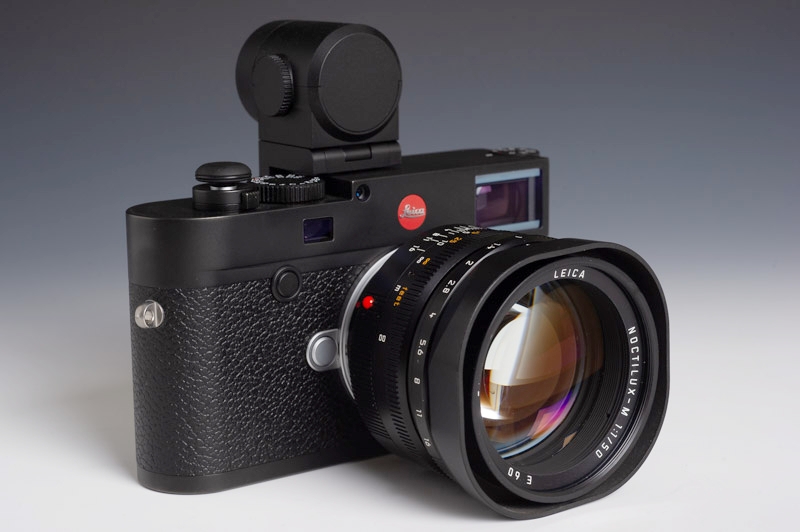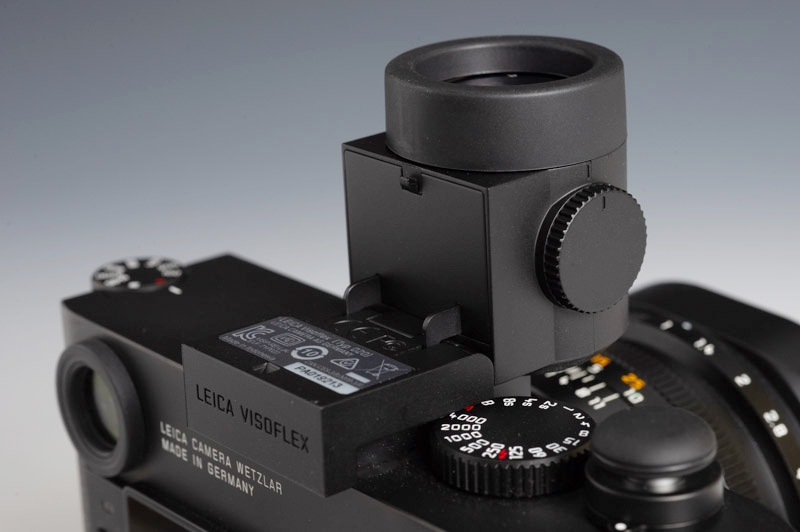Being a diehard Leica rangefinder fan I was at first skeptical on the need for an accessory viewfinder for my Leica M10. I have been using a rangefinder for so many years that focusing is second nature for me. But I understand that it takes awhile for some to become proficient with a rangefinder and other people just like electronic viewfinders better but they like the size and quality of a Leica M camera. Another reason to choose the accessory viewfinder is that on a Leica there are no frame lines for lenses wider than 28mm so an external viewfinder is necessary. With film cameras optical viewfinders are available but they are not an ideal solution. The image is small and there is no exposure information. You have to focus and set the exposure though the cameras viewfinder then use the external viewfinder for framining. Less than ideal but that was the way it was done for decades.
My reason for trying the Visoflex was because of one particular lens. The Noctilux. I have a 1.0 Noctilux that I enjoy the images that it produces but it is a notoriously difficult lens to focus. The newer 0.95 Noctilux is noticeably sharper but doesn’t have the glow that the 1.0 has. I just like the images that it creates. But I have been disappointed in my percentage of keepers with this lens. I have sent my Leica’s in to have the rangefinders matched to the lens in the past but I was still not satisfied with the results.
On a recent visit to the Leica store I tried the 1.25 optical magnifier and the Visoflex to see if I could improve my focusing. The optical viewfinder was ok but not what I wanted. The Visoflex was a revelation. The viewfinder was much sharper than the previous model for the Leica M240. It also had a faster refresh rate.
Notice the built in diopter on the side. I wish that Leica could add one to the rangefinders.
The image that is shown in the Visoflex is the same image that is shown on the back of the camera when Live View is being used. To use the camera Live View is turned on and you look through the Visoflex. A sensor detects that you are looking through the Visoflex and it turns off the back screen and turns on the image in the Visoflex. It is a nice sharp image. When the lens is focused the image comes into focus. Also the default settings zoom the center of the image and turns on focus peaking. As long as there is enough contrast in the scene the little “ red ants “ really help achieving correct focus. After an exposure the results appear on the screen for about a second and then it reverts back to the Live View.
How the camera and the Visoflex behave is customizable. You can decide when and where the image is viewed be changing the settings in the camera menu.
The Visoflex has a built in GPS unit so you can geotag your images. If you travel that can be a very handy feature.
Closeup view of the Visoflex in use.
The Visoflex was very well designed. It is small but not to small. It looks good on the M10.
The Visoflex can be tilted to accommodate shooting at different angles.
It can also be tilted 90 degrees to make shooting like a Rolleiflex possible. I find people really don’t pay attention when shooting in this manner. It appears that you are shooting straight down.
The image through the Visoflex is the same as seen on the back of the camera when Live View is activated. As shown above you can see that it provides a very high quality image. No it’s not as good as seen in a Leica SL or a Leica Q but it not far behind.
I am very happy that I have decided to give the Leica Visoflex a try. My keeper rate has gone from 20 - 30 percent to better than 80 percent. I now have more confidence when shooting with my Noctilux and I will probably carry it with me a lot more often.













